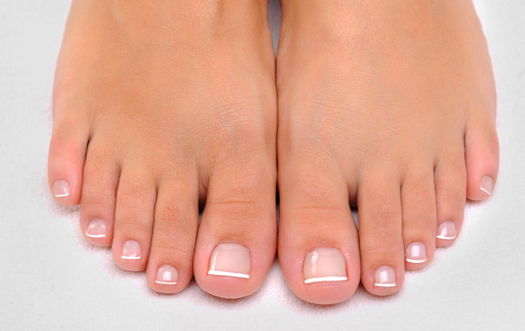What Do Healthy Feet Have to Do with Being Age-Friendly?

In July 2016, the City of Seattle joined the AARP Network of Age-Friendly Communities, which is affiliated with the World Health Organization’s Global Network of Age-Friendly Cities and Communities. The World Health Organization determined eight “domains” of livability—those characteristics that help support all ages, all abilities, all the time. These include safe, walkable streets; good housing; transportation options; access to key services; and opportunities for residents to participate in civic and community activities.
Having healthy feet is directly aligned with staying socially, civically, and physically active, which impacts healthy aging and healthy living! And guess what—April is Foot Health Awareness Month!
Sometimes we take our feet for granted, but foot health and foot care are very important. Whether walking, standing, running, sitting, or lying, foot health is important.
Dr. Julia Overstreet, a podiatrist and wound care specialist, provided in-service training to nursing staff at Aging and Disability Services—the Area Agency on Aging for Seattle-King County—and other nurses and case managers in the community several months ago.
Dr. Overstreet talked about people who have one or more chronic conditions and how these conditions impact foot care health. There are many challenges in foot health, especially for individuals with diabetes. Diabetes can affect blood vessels and circulation and may lead to complications like diabetic neuropathy.
Heart disease can impact how the heart pumps fluid, and a person might notice swelling in feet and ankles. When this happens, shoes and socks can become tight and circulation is restricted. Pressure on the bony parts of the foot can lead to pressure injuries and foot ulcers. If you have arthritis or osteoarthritis, you may have foot pain caused by degeneration of cartilage. This can impact your ability to walk safely and puts you at risk for injury.
What can you do to “step” in the right direction?
- Check your feet every day, especially between your toes and the bottom of your feet. Look for any red areas that might indicate pressure.
- Keep your feet clean. When you wash your skin and feet, avoid harsh soaps as these strip natural oils from the skin. If you wouldn’t use it on your face, then it’s too harsh to use on any skin on the rest of your body. Consider mild soaps or cleanser—products like Dove or Aveeno, or another non-harsh cleanser.
- Wear light-colored socks whenever possible. This helps you detect any drainage or bleeding from a blister, bunion, or trauma—conditions that a dark sock might not show.
- Get your toenails clipped. Get professional assistance if necessary. Many King County senior centers offer foot care service at a reasonable price.
- Wear well-fitting shoes and socks. Know that, despite the latest fashion trends in shoes or boots, wearing appropriate shoes supports your body weight and more than 25 percent of the body’s collected bone mass. Knee problems, hip pains, lower back pains, and neck and shoulder tension could be caused from wearing shoes that do not support your body properly.
- Before beginning an exercise routine, make sure you stretch your lower leg muscles. This helps to warm up the muscles for movement.
- Limit walking outdoors barefoot. Per the American Podiatric Medical Association, walking barefoot outdoors greatly increases your risk of contracting ringworm, which is a fungal infection. Additionally, walking barefoot leaves your feet unprotected against falling objects and sharp objects, which increases your change of injury.
- Hydrating the inside of your body is crucial, but you need to “water the grass on the surface.” In this case, keep your skin moisturized, particularly your feet. Since your feet have no oil glands, using creams or lotions daily is very important. Look for lotions or creams that do not contain alcohol, as these dry the skin even further. Avoid putting lotion between the toes, as this may cause the skin to break down and increase your risk for an infection.
Don’t take your feet for granted. Take a “step” today towards staying socially, civically, and physically active for years to come.
Contributor Mary Pat O’Leary, RN, BSN, a planner at Aging and Disability Services, is grateful for Dr. Julia Overstreet’s in-service training and subsequent review of this article. Dr. Overstreet is a podiatrist and wound care specialist with 25 years of clinical experience, including 18 years as the director of the Overstreet Wound Care Center in Bellevue. She has lectured regularly on advanced wound care for the University of Washington, and serves as the director and principal presenter for Rainier Medical Education programs.
![AgeWise King County [logo]](https://www.agewisekingcounty.org/wp-content/themes/agewisekingcounty/images/logo.png)